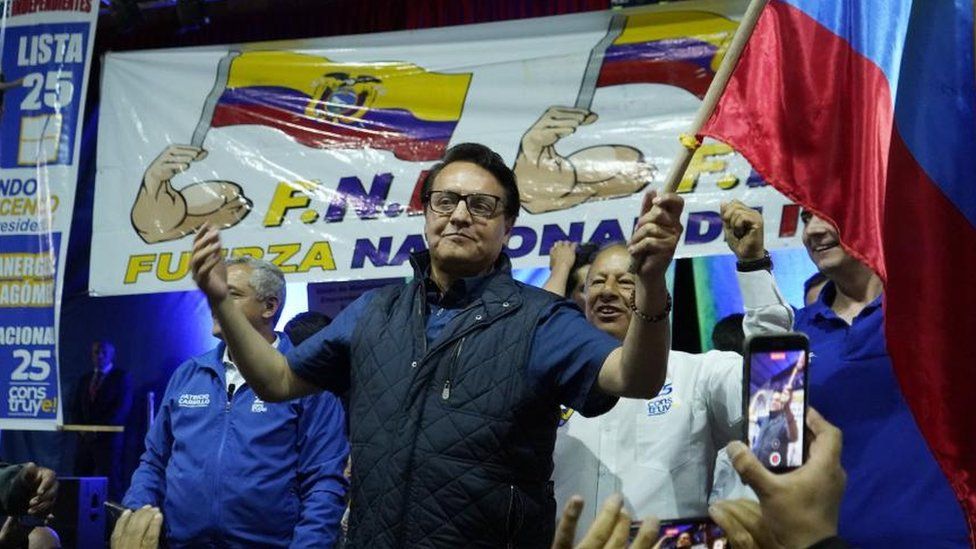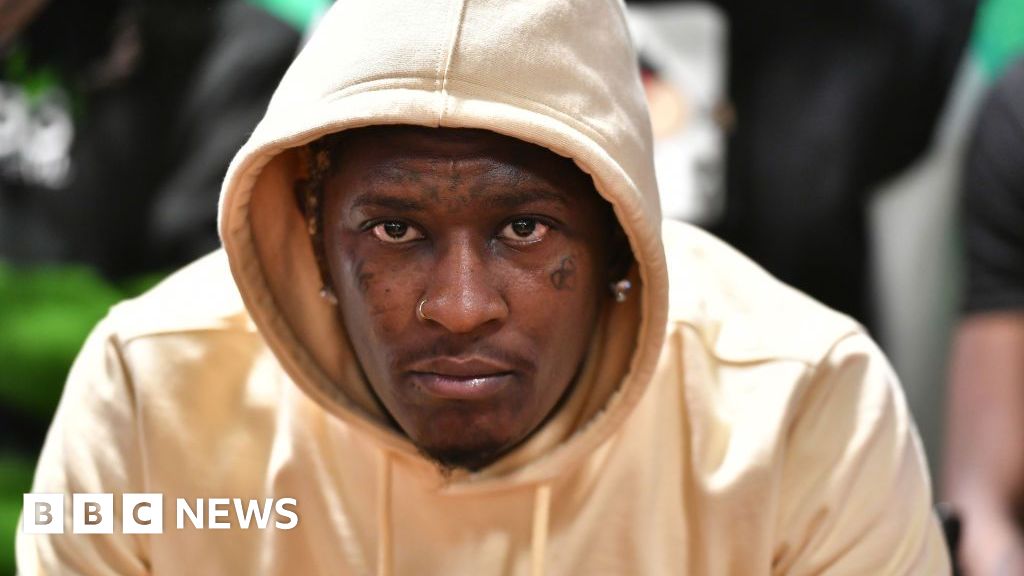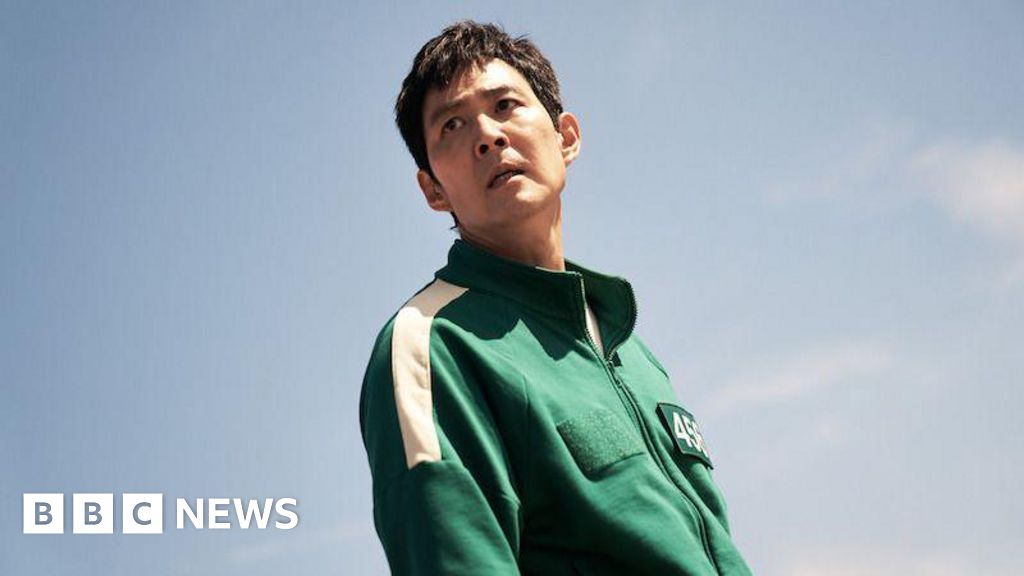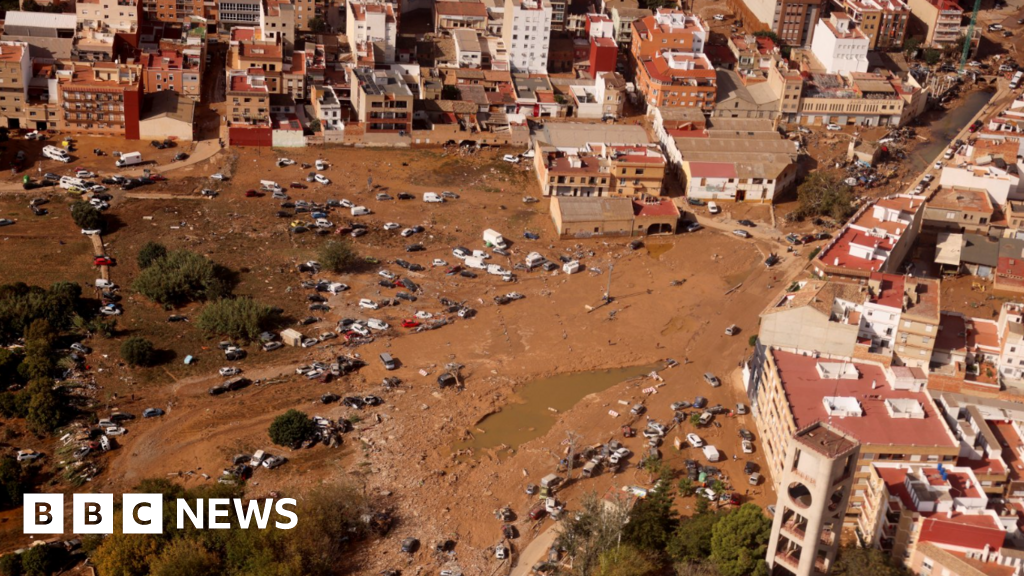ARTICLE AD BOX
 Image source, EPA
Image source, EPA
Fernando Villavicencio's campaign slogan was: "It's time for the brave"
By Vanessa Buschschlüter
BBC News Online Latin America editor
"Here, we pay for democracy with our lives."
The words Fernando Villavicencio shouted into a microphone at a campaign rally just moments before he died in a hail of bullets may have been dismissed as an exaggeration, a rhetorical flourish just five years ago.
But on Wednesday, they proved all too prophetic. Villavicencio, a candidate in the upcoming presidential election, was gunned down as he left the rally in the capital, Quito.
His assassination is not an isolated incident.
A mayor shot as he was inspecting public works, bodies strung from bridges, gang leaders publishing videos in which they threaten to kill politicians unless they do their bidding - a seemingly endless litany of violence has dominated the headlines in this country previously known for its safety.
In 2018, the murder rate stood at 5.8 per 100,000 inhabitants. A majority of its population told a Gallup poll they felt safe walking alone at night.
By 2022, Ecuador's homicide rate had more than quadrupled and Ecuadoreans' perception of safety had plummeted along with their confidence in police to keep them secure.
It is safe to assume that, were a poll to be conducted now, the percentage of those who feel safe would be even lower.
How did Ecuador, a country which until so recently was considered a safe oasis for tourists and locals alike, become a nation where democratically-elected politicians are gunned down?
The answer is gangs - and geography.
Ecuador is sandwiched between Colombia and Peru, the two largest producers of cocaine in the world.
Cocaine production recently reached a record high according to the United Nation's Global Report on Cocaine 2023.
Colombia and Peru, where the coca leaf - the raw material used to make cocaine - is grown, are at the centre of this illegal trade spanning large parts of the globe.
And while production is up, so are the seizures of the drug made by police worldwide.
Colombia in particular has spent decades trying to stem the flow of cocaine and its police have received training and support from the US.
But just as police forces have pooled resources in order to disrupt the flow of cocaine, the gangs doing the trafficking have also become more international.
Following the demobilisation of Colombia's Farc rebel group - once a major player in the cocaine trade - new players have emerged which have forged alliances far beyond Colombia's borders.
Mexican drug cartels and criminal groups from the Balkans have gained a foothold in South America and explored new routes.
Image source, Reuters
Image caption,Ecuador has become a transit country for cocaine
Ecuador, with its good infrastructure and large ports on the Pacific coast, was not only geographically convenient for these gangs, the country's security forces also had little experience of dealing with powerful cartels.
It did not take long for transnational crime syndicates to infiltrate local gangs, which up until then had dedicated themselves to lesser crimes such as extortion.
Many of these new alliances were forged inside Ecuador's jails and it was behind bars that the surge of violence and brutality which has since spread to Ecuador's cities first erupted.
Gangs with ties to rival cartels in Mexico confronted each other in jails, mutilating each other with home-made weapons and displaying the decapitated heads of their enemies.
Hundreds of inmates have been killed in deadly fights in Ecuador's overcrowded prisons over the past years and efforts to quell the violence by transferring prisoners to different jails just seem to have spread the problem nationwide.
Image source, Getty Images
Image caption,Violent inmates have been transferred in an effort to separate rival gangs but the move appears to have spread the problem wider
Last month, 136 guards were held hostage by inmates who staged simultaneous riots in jails across the country.
And while many of the leaders of the gangs which have emerged in Ecuador are behind bars, the violence they have unleashed has not been confined to the prisons.
Through mobile phones smuggled into the jails, they run their criminal enterprises on the outside and order the killings of those who they perceive to stand in their way.
Fernando Villavicencio had been threatened the week before he died by members of Los Choneros, a gang named after the city of Chone, in western Ecuador.
Los Choneros has ties to the Sinaloa cartel, whose former leader, Joaquín "El Chapo" Guzmán is in jail in the US.
Buoyed by the money channelled to them from their new allies abroad and their firepower boosted by high-powered weapons smuggled in from the US via Mexico, these gangs have become a formidable enemy.
Image source, Reuters
Image caption,Soldiers have been drafted in to restore order in jails after deadly fights broke out between rival gangs
Few are willing to confront them. Fernando Villavicencio was one of them.
Even after having been warned by Los Choneros not to defy the gang or even mention its name, Villavicencio remained true to his campaign slogan: "It's time for the brave".
"They [the gangs] said they would break me, but I don't fear them," he said in a video uploaded to the internet shortly after he was threatened.
Villavicencio was given police protection but he continued to campaign and just moments before his death, he was shaking the hands of voters.
Shortly after his brutal killing, a video appeared showing masked men admitting carrying out his assassination and threatening another presidential candidate.
Chillingly, the masked men say they belong not to Los Choneros, but to a gang calling itself Los Lobos (The Wolves), which has links to another powerful Mexican criminal organisation, the Jalisco New Generation Cartel.
While police have not yet said who they think is behind Fernando Villavicencio's assassination, the fact that a presidential candidate could be killed while under police protection at a public event in the capital will leave Ecuadoreans who do not enjoy such levels of protection fearing for their safety.

 1 year ago
81
1 year ago
81









 English (US)
English (US)